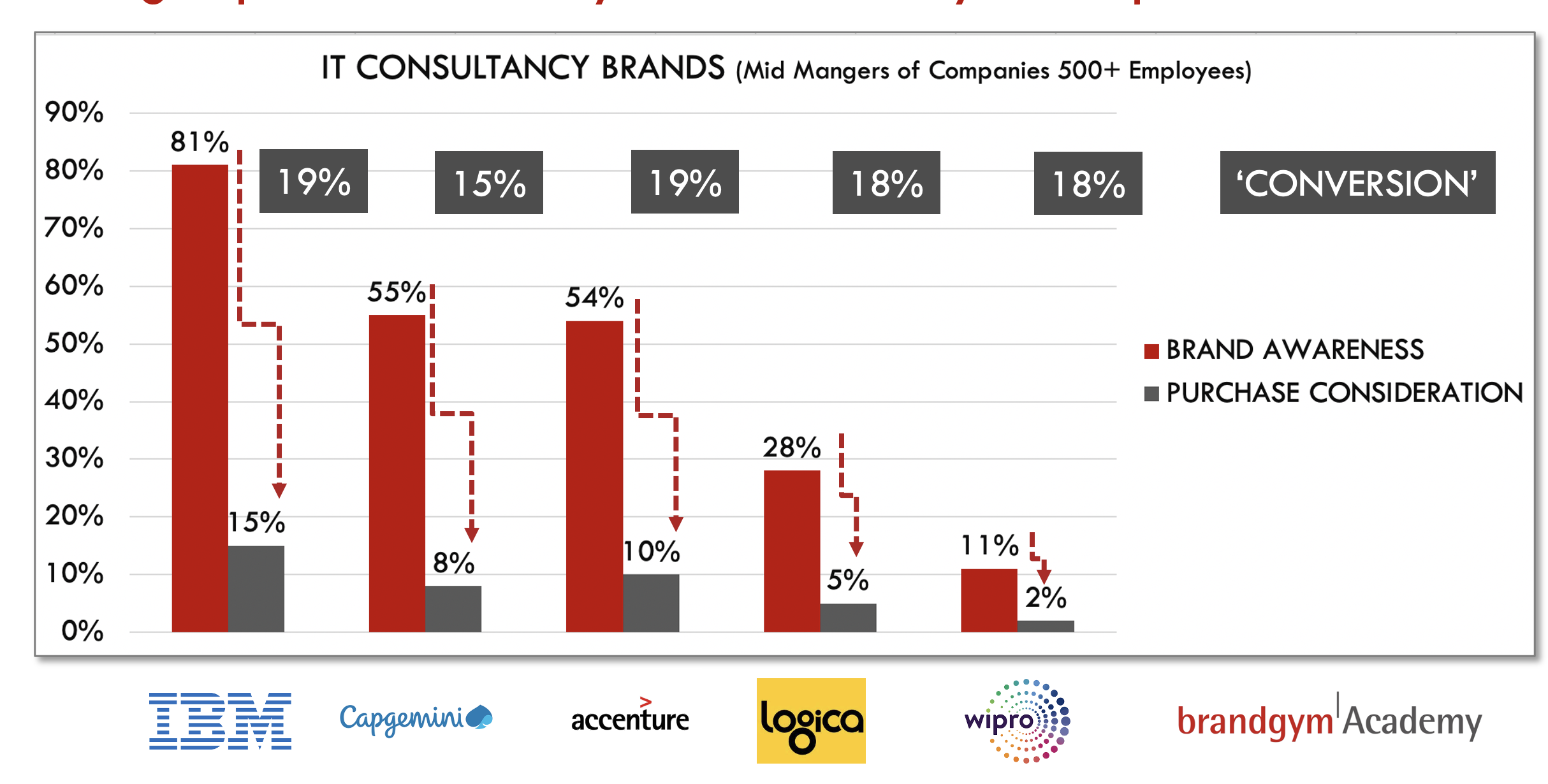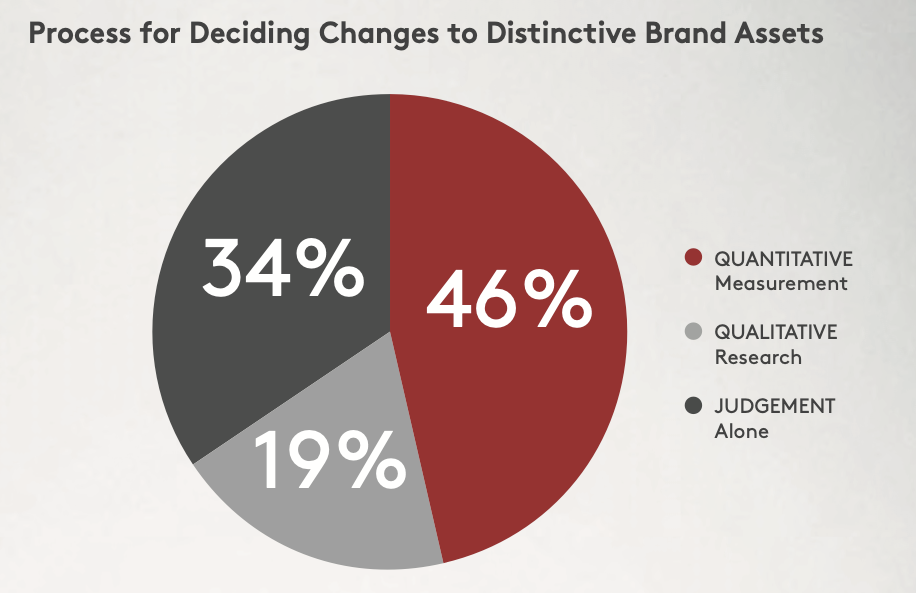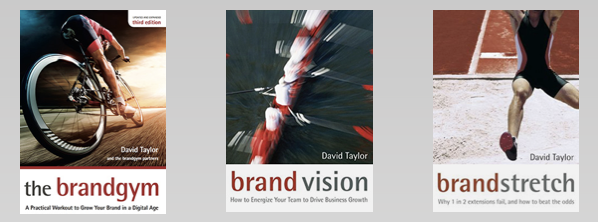B2B Brands Desperately Need Distinctive Brand Assets
We posted recently about how a mere 15% of brands have truly distinctive brand assets (logos, colours, symbols, slogans etc.). New research shows that business to business (B2B) brands have a particular problem with distinctiveness.
LinkedIn’s B2B Institute and Distinctive BAT analysed 300+ assets from 59 brands across six big B2B categories (1). The two key measures used were 1. recognition and 2. correct brand attribution. Almost all brands tested lacked any distinctive brand assets. See below results for Cloud Services, Cyber Security and CRM. Note how the top right corner of each graph is pretty empty.“Many category buyers claim to recognize the assets on the left,” note the authors of the report. “But almost all these assets score in the single digits when it comes to attribution.”

Does this matter for B2B brands? I suggest the answer is a firm “yes”. Distinctive assets help B2B brands build memory structure. This builds brand awareness, critical when buyers select B2B brands, either directly or when adding them to a shortlist of vendors. Looking at IT consultancies on a brandgym project we found conversion of awareness to consideration was similar across brands at 15-19% (see below). The only way to drive up consideration was to boost awareness; becoming more famous if you like.

So, how can B2B brands go about building distinctive brand assets?
1.Measure your brand assets
Only a minority of companies are measuring their brand assets quantitatively (see below), as we posted on here. And we expect this figure to be even lower for B2B brands. Step one, therefore, is to create a baseline measure of your brand assets. We partner with agencies including Distinctive BAT to do this on projects using our IcAT method (Iconic Asset Tracking).

2.Drive distinctiveness
The likely outcome for a B2B brand in testing will be a lack of distinctive brand assets. The challenge in this case is to drive distinctiveness. Here, there are a few tips that can be helpful:
- Logos and characters tended to score highly on recognition and attribution in the study. Amazon’s smile logo, for example, is recognised by 93% of cloud buyers and 67% attribute it to Amazon. In CRM, Salesforce’s Astro character increases attribution by 40%.
- Relying on colour alone is unlikely to be effective. “In tech and finance… blue is the color of the ‘sea of sameness’, which makes it a weak basis for distinctiveness,” warns the report (1). Combining colour with other assets can be a better route. For example, the greyscale version of Microsoft’s logo scores 42% lower than the colour version.
- Leverage B2C assets: the study suggests B2B brands with B2C businesses should try and leverage the same assets. Doing this helps drive higher performance than pure B2B brands. For example, Microsoft’s logo has 71% attribution, helped by its heavy exposure in consumer marketing.
- Look for links between assets. A concrete link between an asset and the brand name is one obvious way to enhance effectiveness e.g. Liberty Mutual’s logo uses the Statue of Liberty. At the brandgym we’ve used sporty imagery to chime with the “gym for brands” concept, along with consistent use of red and grey colours (see brandgym books below as an example).

3. Treasure your brand assets
Long term consistency is key to creating distinctive memory structure. The Amazon smile mentioned has been used consistently since 2000, for example. You wouldn’t destroy a physical asset like a factory without hard data; it shouldn’t be any different with your brand assets.
Survey Monkey discovered the drawbacks of ditching distinctive brand assets. The brand name had popularity on-par with Google and a personality seen as “simple,” “helpful” and “fun,” based on large-scale quant surveys (2). However, in 2021 concerns over the brand’s suitability for big enterprise clients like IBM led to a new company name: Momentive. “The name is a nod to the momentum, movement and dynamism our customers need to make decisions with confidence,” the CMO at the time Leela Srinivasan enthused.
Maybe the new company name did have a more serious, business-like feel for large enterprise customers. However, these clients made up only c. 30% of revenue. Furthermore, this share of business had grown from 10% in 2018 using ….. the Survey Monkey brand! Significant and sustained investment would be needed to build brand equity in Momentive to anywhere near the level of Survey Monkey.
Dialling up attributes like reliability and service in marketing of Survey Monkey to enterprise customers would be a better route, I suggest. And new CEO Eric Johnson seemed to agree. He moved quickly to reverse the change in 2023. “Returning to SurveyMonkey will unify our products under a single iconic name synonymous with helping customers gather insights for decades,” he rightly commented (3).

In conclusion, B2B brands have a big job to do to create, amplify and measure distinctive brand assets. But the opportunity for those that manage to do this is significant.
SOURCES


